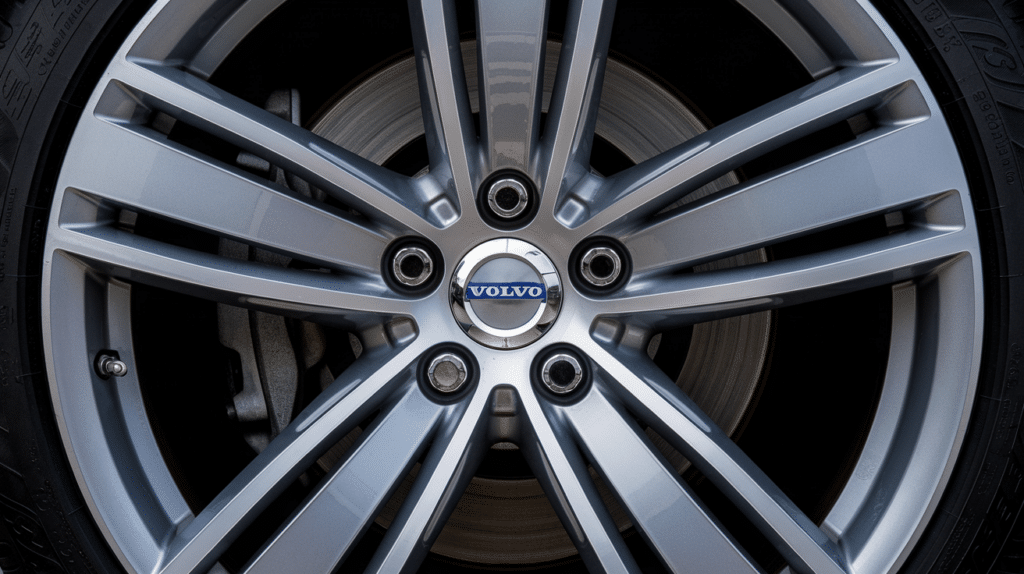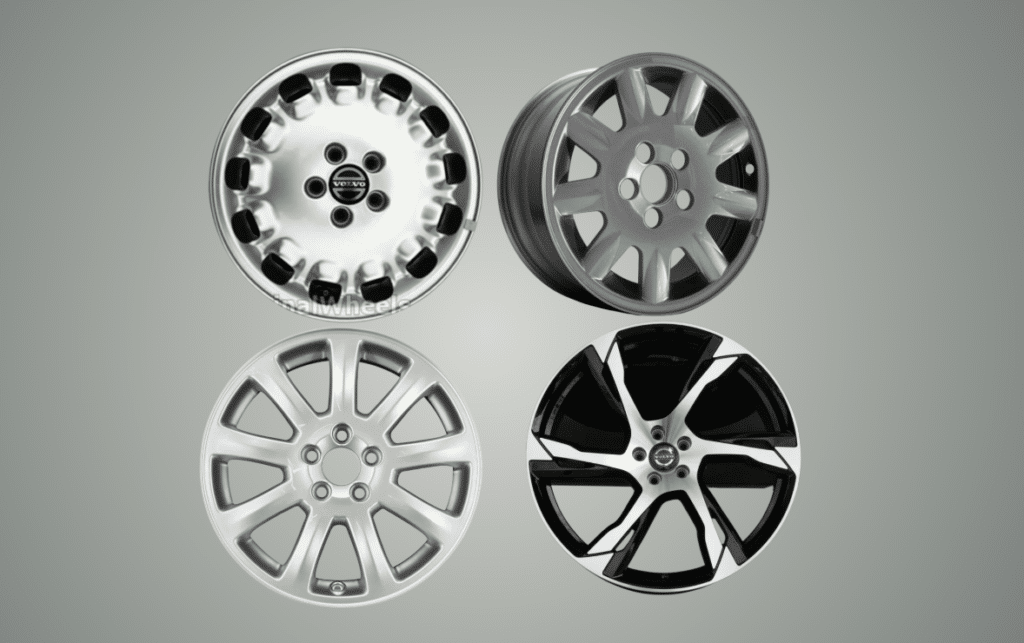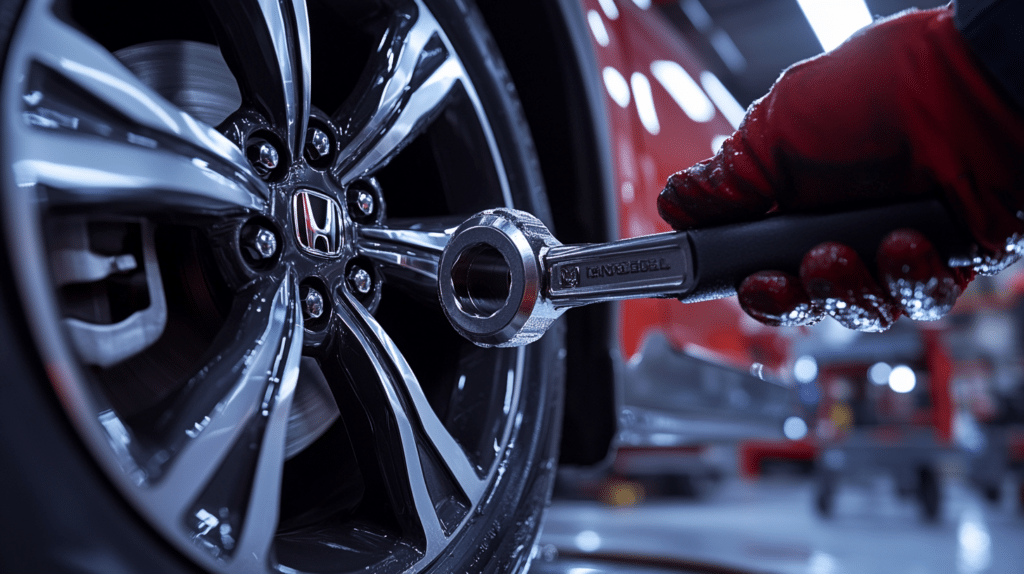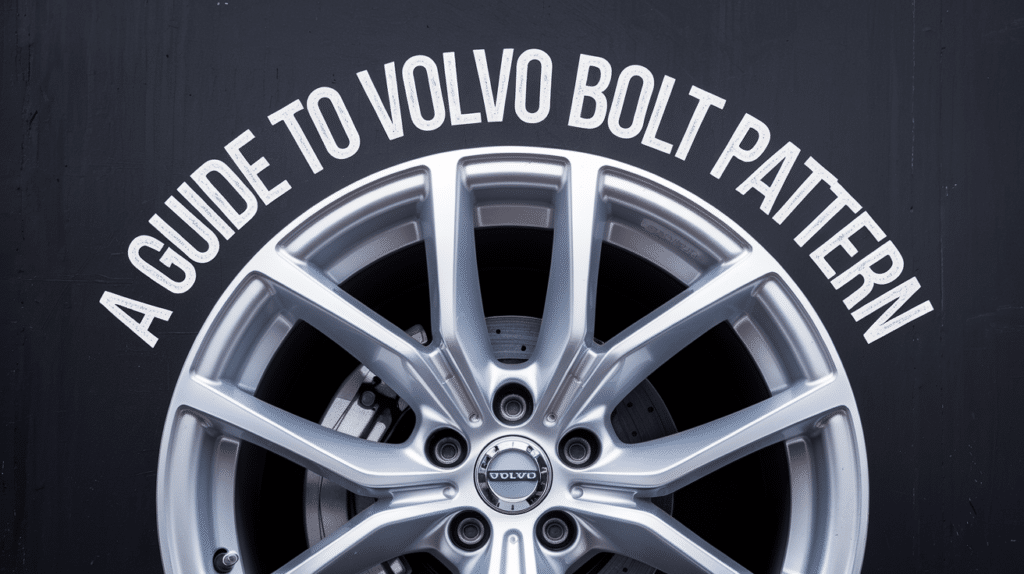Do you own a Volvo and want to swap wheels? I know the feeling of staring at those lug nuts, wondering if new rims will fit.
Here’s something many car owners don’t realize: Volvo uses different bolt patterns across their models.
Getting it wrong can be costly and time-consuming. I’ll help you skip the guesswork and expensive mistakes.
In this guide, I’ll walk you through the exact measurements for every Volvo model. You’ll learn how to check your bolt pattern and find wheels that fit perfectly.
Jump in to master your Volvo’s bolt pattern specs and make your next wheel upgrade stress-free.
What Is the Bolt Pattern for A Volvo?

The bolt pattern, also known as the lug pattern, is a critical specification for wheel fitment. It describes the arrangement of lug holes and their diameter.
Standard Bolt Pattern for Volvo Models
Most Volvo vehicles, including older and newer models, feature a 5x108mm bolt pattern. This means:
- The wheel has five lug holes.
- The diameter of the imaginary circle passing through the center of these holes is 108mm.
Exception: Older Volvo models like the 122 and 1800 (up to 1969) have a bolt pattern of 5×114.3mm (5×4.5″).
Importance of Bolt Pattern
The bolt pattern is essential for ensuring the following:
- Proper alignment of wheels with the hub.
- Stability and safety during driving.
- Compatibility with aftermarket or replacement wheels.
Bolt Pattern Components
Lug Count- Volvo wheels typically have five lug holes.
Pitch Circle Diameter (PCD)- The distance across the circle formed by the lugs is 108mm for most Volvos.
Applications:
- Volvo XC90: Standard bolt pattern is 5x108mm.
- Wheel spacers can modify the bolt pattern if you wish to fit aftermarket wheels.
This specification also ensures proper distribution of the vehicle’s weight across the wheels.
Understanding Volvo Bolt Patterns and Their Compatibility

Volvo vehicles feature a distinct 5x108mm bolt pattern for most of their models, which is relatively uncommon in the automotive world.
This exclusivity ensures a high level of safety, stability, and precise fitment for Volvo wheels.
However, it can limit compatibility with aftermarket options unless proper adapters are used.
Factors That Affect Compatibility
1. Offset (ET):
- Volvo primarily uses positive offsets, meaning the hub-mounting surface is closer to the outer edge of the wheel.
- An incorrect offset can lead to the wheel rubbing against suspension or brake components.
2. Hub-Centric Design:
- Volvo wheels are hub-centric, meaning the center bore perfectly matches the hub’s diameter (typically 65.1mm).
- This ensures proper weight distribution and reduces stress on lug bolts.
3. Wheel Size and Diameter:
Most Volvos support wheels ranging from 14” to 18” in diameter, but upgrading requires maintaining the correct bolt pattern and hub bore dimensions.
Adapting Non-Compatible Wheels
If you’re considering wheels with a different bolt pattern, here’s how to adapt them:
- Wheel Spacers: High-quality, hub-centric spacers can convert the bolt pattern (e.g., 5x108mm to 5×114.3mm) while maintaining safety and functionality.
- Extended Lug Bolts: Ensure the bolts provide sufficient thread engagement after installing spacers.
Common Issues with Bolt Pattern Compatibility
- Brake Caliper Clearance: Larger wheels or incorrect offsets may lead to interference with brake calipers.
- Misalignment: Improper torque application can result in wheel wobble or loosening over time.
- Structural Stress: Non-compatible bolt patterns can cause undue stress on suspension components, compromising safety.
Expert Tip: Always prioritize wheels specifically designed for Volvo’s bolt pattern. Even minor deviations in specifications can significantly affect handling, braking performance, and safety.
Correct Bolt Pattern for A Different Volvo Model
| Volvo Model | Year Range | Bolt Pattern (PCD) | Stud Size | Hub Bore (mm) | Offset (ET) |
|---|---|---|---|---|---|
| 200 Series | 1979–1994 | 5×108 | 1/2″-RH | 65.1 | Medium (varies) |
| 700 Series | 1985–1992 | 5×108 | 12×1.5 | 65.1 | +25 mm |
| 760 | 1983–1990 | 5×108 | 12×1.5 | 65.1 | +25 mm |
| 780 | 1983–1991 | 5×108 | 12×1.5 | 65.1 | +25 mm |
| 850 | 1992–1993 | 4×108 | 12×1.5 | 65.1 | Varies by trim level |
| 850 Turbo | 1994+ | 5×108 | 12×1.5 | 65.1 | +43 mm (approximate) |
| 940 | 1991–1995 | 5×108 | 12×1.5 | 65.1 | Medium (varies) |
| 960 | 1995–1997 | 5×108 | 12×1.75 | 65.1 | +43 mm (approximate) |
| 40 Series (1st Gen) | 1998–2003 | 4×114.3 | 12×1.5 | 67.0 | Medium (varies) |
| 40 Series (2nd Gen) | 2004+ | 4×114.3 | 12×1.5 | 67.0 | Medium (varies) |
| 60 Series | 2001+ | 5×108 | 14×1.5 | 65.1 | +45 mm (approximate) |
| 70 Series | 1997+ | 5×108 | 12×1.75 | 65.1 | +43 mm (approximate) |
| 80 Series | 1997+ | 5×108 | 14×1.5 | 65.1 | +45 mm (approximate) |
| 90 Series | 1997+ | 5×108 | 12×1.5 | 65.1 | +45 mm (approximate) |
| V70XC | 2003+ | 5×108 | 14×1.5 | 65.1 | +45 mm (approximate) |
| XC90 | 2003+ | 5×108 | 14×1.5 | 65.1 | +45 mm (approximate) |
How To Identify the Correct Bolt Pattern for A Specific Volvo Model
Step 1: Check Your Volvo Model’s Specifications
To identify the correct bolt pattern, consult your Volvo’s user manual or inspect the wheel for markings that indicate specifications.
Most Volvo models, such as the 200, 700, 900 series, and XC90, use a 5x108mm bolt pattern.
Older models like the 122 and 1800 (pre-1969) use a 5×114.3mm pattern, which requires adapters for compatibility.
Step 2: Measure the Bolt Pattern
Use a ruler or caliper to measure:
- For even lug counts, measure the distance between the center of one lug hole and the center of the lug hole directly opposite.
- For odd lug counts, measure from the center of one lug hole to the far edge of the second lug hole and calculate the circle’s diameter.
Step 3: Inspect the Hub Bore
- Most Volvo models have a 65.1mm hub bore for precise wheel fitment.
- Ensure the wheel hub bore matches the vehicle to prevent vibrations.
- Use hub-centric rings if the hub bore of aftermarket wheels is larger.
- Regularly inspect for rust or debris buildup around the hub area.
Step 4: Verify Wheel Offset (ET)
Offset affects how far the wheel sits inward or outward. Volvo wheels typically have positive offsets between +20mm and +45mm.
Incorrect offsets can cause wheel rubbing or suspension issues.
Always test-fit wheels to confirm clearance before permanent installation.
A PLUS ONE: Use Online or Professional Resources
- Utilize online tools to input your Volvo’s year, make, and model for guidance.
- Refer to the owner’s manual or professional fitment guides for accurate data.
- Consult experts for advice on bolt patterns and wheel compatibility.
- Double-check wheel specifications before purchase to ensure proper fitment.
By following these steps, you can confidently identify the correct bolt pattern for your Volvo, ensuring safe and optimal wheel fitment.
Comparisons Between Volvo’s and Other Brands’ Bolt Patterns
| Brand | Bolt Pattern (PCD) | Models | Price Range (Wheels) | Key Notes |
|---|---|---|---|---|
| Volvo | 5×108 | XC90, 200 Series, 700/900 Series | $150–$400 per wheel | Unique bolt pattern; fewer aftermarket options, but highly stable and precise. |
| Ford | 5×108 | Focus, Mondeo | $120–$350 per wheel | It is compatible with Volvo’s bolt pattern but often requires offset adjustments. |
| Ferrari | 5×108 | 360 Modena, F430 | $800–$2,500 per wheel | It shares the bolt pattern with Volvo but uses high-performance materials. |
| Toyota | 5×114.3 | Camry, RAV4 | $100–$300 per wheel | The most common pattern is extensive aftermarket support. |
| Honda | 5×114.3 | Civic, Accord | $90–$280 per wheel | Popular in compact cars, different hub bores may require spacers for Volvo. |
| BMW | 5×120 | 3-Series, 5-Series | $200–$600 per wheel | It is completely incompatible with Volvo bolt patterns. |
| Mercedes-Benz | 5×112 | C-Class, E-Class | $250–$700 per wheel | Requires adapters to fit Volvo vehicles. |
Bolt Pattern Misalignment: Warning Signs and Quick Fixes

Bolt pattern misalignment can lead to serious safety concerns and poor vehicle performance.
Identifying the signs early and addressing the issue promptly is crucial to maintaining your Volvo’s stability, tire longevity, and driving comfort.
Signs of Bolt Pattern Misalignment
- Uneven tire wear or rapid tread degradation.
- Vibrations or wobbling are felt while driving, especially at higher speeds.
- Difficulty in properly tightening lug nuts or bolts.
- Audible clunking or rattling sounds from the wheel area.
- The steering feels off-center or pulls to one side.
- Visible gaps between the wheel and hub.
Fixing Bolt Pattern Misalignment
- Inspect Lug Bolts: Replace damaged or worn-out bolts or nuts.
- Re-Torque Bolts: Use a torque wrench to tighten bolts to the manufacturer’s specifications.
- Check Wheel Fitment: Ensure wheels have the correct bolt pattern and offset.
- Use Hub-Centric Rings: Fill gaps to create a snug fit between the hub and wheel.
- Realign Wheels: Seek professional alignment services to correct uneven angles.
- Replace Wheels: Install wheels with the correct bolt pattern if mismatched.
- Use Quality Adapters: For aftermarket wheels, use hub-centric adapters designed for Volvo’s 5x108mm pattern.
How To Maintain Bolt Patterns on Your Volvo
Maintaining the bolt patterns on your Volvo is essential for ensuring safety, proper wheel alignment, and optimal performance.
Follow these practical steps to keep your bolt pattern and wheels in top condition:
Regular Inspection of Lug Bolts/Nuts:
- Check the condition of lug bolts or nuts for signs of wear, rust, or damage.
- Replace damaged or worn bolts immediately to prevent unsafe wheel attachment.
Proper Torque Application:
- Use a torque wrench to tighten lug bolts in a crisscross/star pattern.
- Refer to your Volvo owner’s manual for the correct torque specification, which is vital to prevent over-tightening or under-tightening.
Avoid Using Impact Wrenches:
- Never use powered impact wrenches, as they can damage threads or bolts.
- Instead, use a manual wrench for controlled tightening and removal of lug nuts.
Test Fit New Wheels:
- When replacing wheels, ensure they have the correct 5x108mm bolt pattern for most Volvo models.
- Verify proper clearance from brakes, suspension, and other components before permanent installation.
Keep Wheels Clean and Rust-Free:
- Clean wheels regularly to remove debris and prevent rust buildup around the bolt area.
- Apply anti-corrosion treatments if necessary, especially in regions with harsh weather conditions.
Re-Torque After Installation:
- After mounting new wheels, re-torque them after driving 50–100 miles.
- This step ensures bolts remain secure as the wheels settle into place.
Use Quality Spacers When Adapting:
- If using spacers to modify the bolt pattern, opt for hub-centric spacers to maintain stability and safety.
- Ensure spacers are made of high-quality materials like forged aluminum for durability.
By following these steps, you can ensure your Volvo’s bolt pattern remains in excellent condition, prolonging wheel life and enhancing driving safety.
The Bottom Line
Picking the right bolt pattern for your Volvo isn’t just about measurements – it’s about keeping your car safe and running well.
I’ve shown you how to check your specific model’s pattern, compare it with other brands, and maintain those crucial bolt connections.
Remember: take your time with the measurements. One wrong number could mean the difference between a perfect fit and a costly mistake.
Want to explore more bolt patterns? Check out my guides on Jeep Gladiator bolt patterns and Mercedes bolt patterns – they’ll help you understand how different manufacturers approach wheel fitment.


